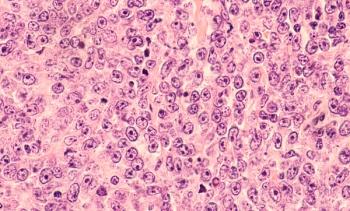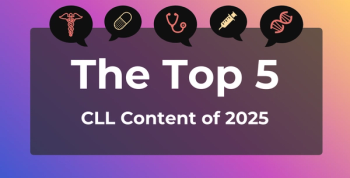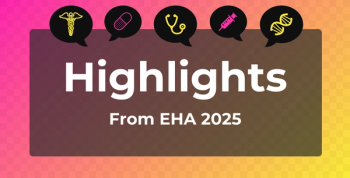
Using Ruxolitinib to Target JAK1/2 in T-LBL May Prevent Treatment Resistance
For pediatric patients with T-cell origin lymphoblastic leukemia (T-LBL) with disease progression following second-line treatment, investigators found that the JAK1/2 pathway may be a new actionable target through treatment with ruxolitinib.
For the approximate 14% of pediatric patients with T-cell origin lymphoblastic leukemia (T-LBL) with
These findings appeared recently in
“Current treatment protocols for pediatric patients with T-LBL allow the achievement of a complete remission in around 85% of T-LBL pediatric patients,” the authors wrote. “Thus, the major issues to be addressed are the identification of a valuable predictor marker to foresee the disease risk and new therapeutic targets to improve relapsed/resistant patients’ outcome.”
In their study of 22 pediatric patients with T-LBL and a poor prognosis, who are characterized by hyperactivation of the JAK1/2-STAT6 pathway, the investigators performed a reverse phase protein array (RPPA) study on the patients’ phosphor-proteomic profiles to find reliable disease markers, intending them to be therapeutic targets. They found that the STAT6 hyperactivation facilitated treatment resistance by binding the glucocorticoid receptor and silencing the STAT6 gene compared with compared with patients who achieved complete remission.
However, inhibiting the JAK1/2-STAT6 pathway with ruxolitinib both increased cell death and reduced cell growth.
Analyses also found:
- Four of 8 proteins found via RPPA were part of the JAK2-STAT6 pathway:
- JAK2 Y1007-1008 (q = 0.025, local FDR = 0.045)
- BCL-XL (q = 0.036, local FDR = 0.078)
- STAT6 Y641 (q = 0.103, local FDR = 0.148)
- p27Kip1 expression (q = 0.037, local FDR = 0.079) i
- JAK2 Y1007-1008 had the best AUC value (AUC = 0.88; 95% CI, 71.81%-100%; P = .0043)
- High levels of JAK1/2-STAT6 activation significantly affected progression-free survival
- STAT6 hyperactivation binds the glucocorticoid receptor (GR), which facilitates therapy resistance through inhibiting glucocorticoid transcription
- Ruxolitinib plus dexamethasone increased GILZ mRNA expression, signifying increased GR transcriptional activity
- Inhibiting the JAK1/2 pathway made glucocorticoid-resistant cells more receptive to dexamethasone
“Valuable prognostic markers capable of an early identification of the T-LBL patients at risk of bad/severe prognosis, and new specific drug targets to overcome drug resistance, possibly avoiding high-dose ineffective overtreatments, are highly needed for this patient population,” the authors emphasized when noting the significance of their findings.
Still, they added that their results—among which JAK2 Y1007-1008 hyperphosphorylation made it the most significant protein to target in their study cohort with T-LBL—should be confirmed through an independent validation cohort study.
Reference
Veltri G, Silvestri C, Gallingani I, et al. Ruxolitinib as a novel therapeutic option for poor prognosis T-LBL pediatric patients. Cancers (Basel). Published online July 24, 2021. doi:10.3390/cancers13153724
Newsletter
Stay ahead of policy, cost, and value—subscribe to AJMC for expert insights at the intersection of clinical care and health economics.







































